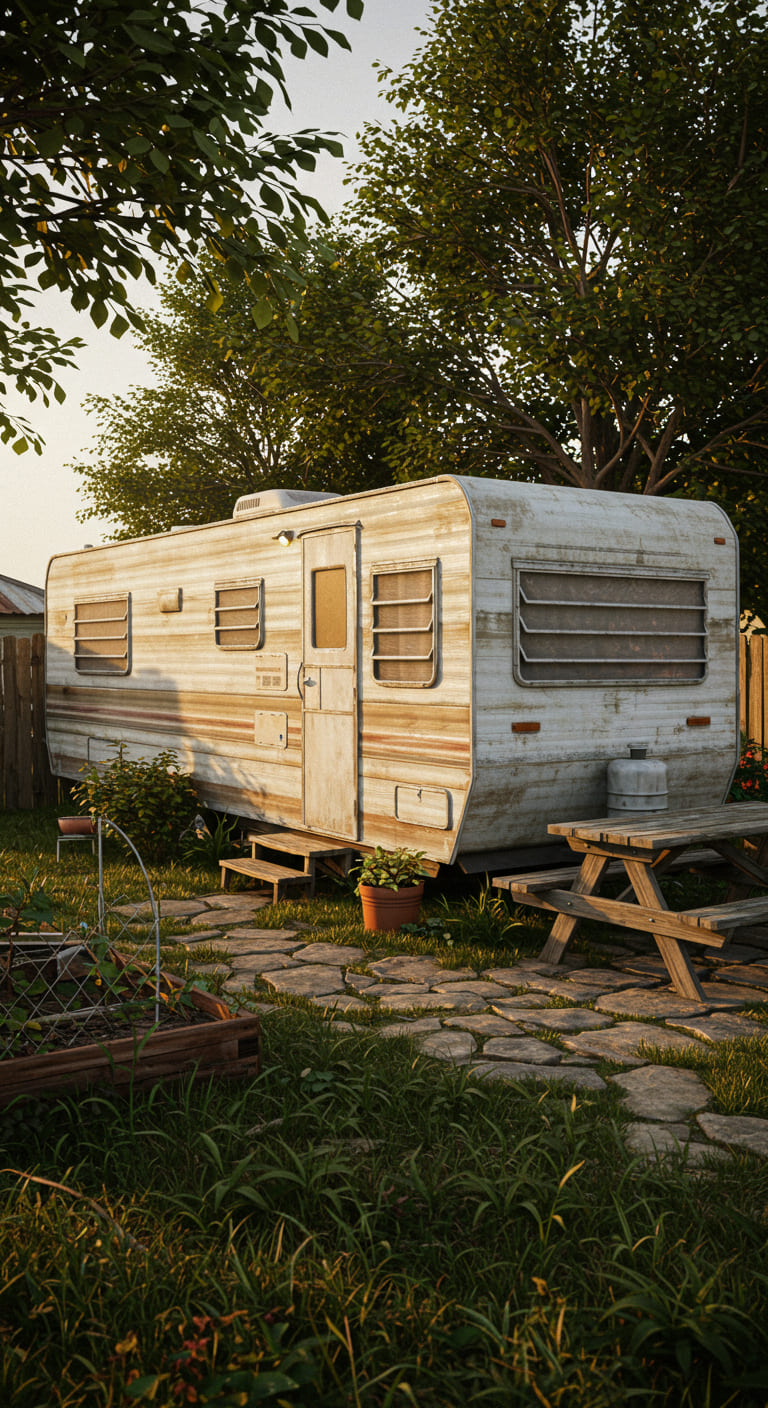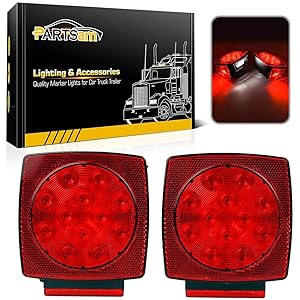As an avid traveler and outdoor enthusiast, I’ve spent countless hours towing my trailer across the country. While there’s nothing quite like the freedom of the open road, one of the most alarming experiences I’ve encountered is trailer sway. If you’ve ever felt your trailer start to sway behind you, you know how terrifying it can be. In this article, I will explore what causes trailer sway, share my personal experiences, and provide solutions that have worked for me. Let’s dive in!
Understanding Trailer Sway
Trailer sway, often described as a side-to-side movement of the trailer while towing, can occur unexpectedly and can lead to serious accidents if not addressed promptly. According to the National Highway Traffic Safety Administration (NHTSA), trailer sway is responsible for a significant percentage of towing accidents. Understanding the causes of this phenomenon is crucial for every trailer owner.
What Causes Trailer Sway?
There are several factors that contribute to trailer sway. Here are the most common causes I’ve identified:
- Improper Weight Distribution: One of the leading causes of trailer sway is improper weight distribution. If the load in your trailer is not balanced correctly, it can shift while driving, causing the trailer to sway.
- Excessive Speed: Driving too fast is a major factor in trailer sway. The faster you go, the more difficult it becomes to control your trailer, especially in windy conditions.
- Wind and Weather Conditions: Strong winds can push against your trailer, leading to sway. Additionally, wet or icy roads can make controlling your vehicle and trailer more challenging.
- Inadequate Hitch Setup: A poorly installed or inadequate hitch can lead to instability. Ensuring that your hitch is rated for the weight of your trailer is key.
- Trailer Design: The design of your trailer can also impact its stability. A longer trailer may be more prone to sway than a shorter one.
My Personal Encounter with Trailer Sway
I remember my first long trip with my trailer. Excited to explore the great outdoors, I loaded it up with gear, but I didn’t pay much attention to weight distribution. As I drove down the highway, a sudden gust of wind caused my trailer to sway violently. My heart raced as I fought to regain control. It was a wake-up call that taught me the importance of understanding trailer sway.
Identifying the Signs of Trailer Sway
Recognizing the signs of trailer sway early can make all the difference in preventing a dangerous situation. Here are some signs to watch for:
- Feeling a sudden pull or jerk from your trailer.
- Noticing the trailer moving side to side in your mirrors.
- Experiencing difficulty steering your vehicle.
- Hearing unusual noises from the trailer or hitch.
Preventing Trailer Sway: My Top Solutions
Over the years, I’ve developed a set of strategies to minimize the risk of trailer sway. Here’s what works for me:
1. Proper Weight Distribution
One of the most effective ways to prevent trailer sway is to ensure proper weight distribution. I always make sure that:
- The majority of the weight is located in the front half of the trailer.
- Heavy items are secured and evenly distributed.
- The trailer is not overloaded beyond its capacity.
2. Invest in a Weight Distribution Hitch
After my initial experience with sway, I invested in a weight distribution hitch. This device helps distribute the weight of the trailer more evenly across the axles, providing better stability. I can confidently say that this investment was worth every penny.
3. Monitor Your Speed
I’ve learned that maintaining a safe speed is essential. I avoid exceeding the speed limit, especially when towing. A speed of 55 mph or lower is often recommended for towing trailers, especially in adverse weather conditions.
4. Check Your Tire Pressure Regularly
Proper tire pressure is crucial for both the towing vehicle and the trailer. I make it a habit to check tire pressure before every trip. Under-inflated tires can lead to poor handling and increase the risk of sway.
5. Be Mindful of Weather Conditions
Weather plays a significant role in towing safety. I always check the forecast before starting my journey. If strong winds or severe weather are predicted, I reconsider my travel plans. Safety should always come first.
Case Study: Real-Life Experiences with Trailer Sway
To further illustrate the importance of understanding trailer sway, let me share a case study from a fellow traveler, Tom, who encountered a harrowing situation on a long-distance trip.
Tom was driving through a mountainous region when he suddenly experienced trailer sway. He had not distributed the weight properly in his trailer, and as he navigated a steep incline, the trailer began to sway side to side. Fortunately, he remembered the techniques I shared with him and gradually reduced his speed while keeping a firm grip on the steering wheel. He successfully regained control, but it was a close call that underscored the importance of preparation.
What to Do if You Experience Trailer Sway
If you find yourself in a situation where your trailer is swaying, here’s what I recommend:
- Stay Calm: Panicking can lead to overcorrection. Take a deep breath and focus on regaining control.
- Avoid Sudden Movements: Gradually reduce your speed by easing off the accelerator. Avoid slamming on the brakes.
- Steer Straight: Keep the steering wheel steady and avoid making sharp turns.
- Pull Over Safely: If the sway continues, find a safe place to pull over and assess the situation.
Frequently Asked Questions (FAQ)
What is trailer sway?
Trailer sway is a side-to-side motion of the trailer while being towed, often caused by factors such as improper weight distribution, excessive speed, or adverse weather conditions.
How can I prevent trailer sway?
Prevent trailer sway by ensuring proper weight distribution, investing in a weight distribution hitch, monitoring your speed, checking tire pressure, and being mindful of weather conditions.
What should I do if my trailer starts to sway?
If your trailer starts to sway, remain calm, gradually reduce your speed, steer straight, and find a safe place to pull over.
Is it safe to tow a trailer in high winds?
Towing in high winds can be risky. If strong winds are forecasted, consider delaying your trip or using additional safety measures, such as a sway control hitch.
Conclusion: Your Safety Comes First
Understanding the causes of trailer sway and implementing preventive measures is essential for every trailer owner. My experiences have taught me that preparation and awareness are key to safe towing. By following the strategies outlined in this article, you can reduce the risk of trailer sway and enjoy a safer journey on the road.
As we wrap up, I encourage you to share your experiences with trailer sway and any tips you may have found helpful. Join our newsletter for more insights and updates, and don’t forget to share this article with your friends and on social media. Safe travels!
Partsam 12V Submersible Square Led Trailer Light,Red White LED Stop Turn Tail License Brake Running Light Lamp for Trailers Under 80" Boat Trailer Truck Marine Camper RV Snowmobile,IP68,DOT Compliant
$16.99 (as of November 16, 2025 07:53 GMT -03:00 - More infoProduct prices and availability are accurate as of the date/time indicated and are subject to change. Any price and availability information displayed on [relevant Amazon Site(s), as applicable] at the time of purchase will apply to the purchase of this product.)
Sign up for our newsletter and stay up to date with exclusive news
that can transform your routine!





